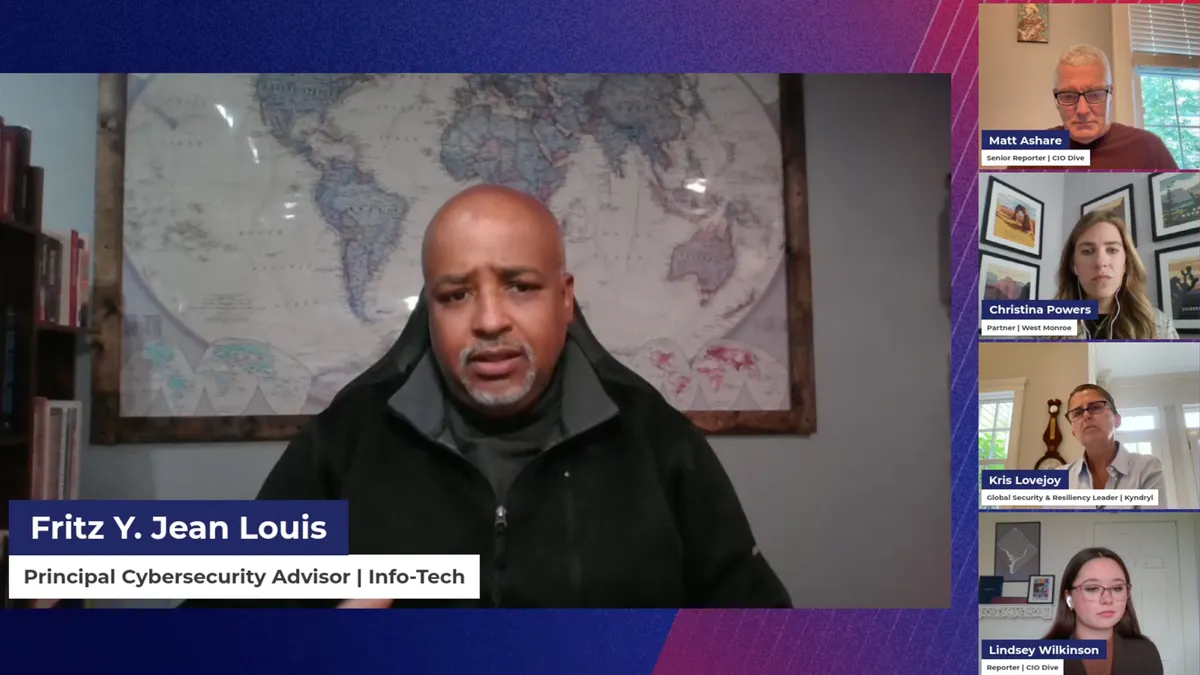Editor’s note: The following is a guest post from Cam Cross, partner in West Monroe’s Technology and Experience practice.
It’s safe to say that AI isn’t just another shiny technology. The scale of disruption caused by AI is reminiscent of the Internet bubble, with college students dropping out to start AI companies, a boost in venture capital investment and rapid disruption in the SaaS space.
AI’s disruption to organizations is still ongoing. Most executives anticipate significant changes in work due to AI and information processing by 2030, according to World Economic Forum data.
While some CIOs are bringing AI-powered capabilities into the business, many IT teams are operating under models developed for a world before AI took center stage: rigid structures, centralized decision-making and outsourcing strategies focused on cost rather than value.
Thriving in the AI era requires intentional changes to the IT operating model. This doesn’t mean starting over from scratch or abandoning what’s working. Instead, it means rethinking IT workforce strategies, team skills, vendor relationships and how AI gets embedded into everyday processes.
Traditional IT operating models were built for stability, not speed or experimentation — and they are fast reaching their limits. CIOs are finding that these legacy structures are now barriers to progress. Emerging now are nimble teams with deep industry knowledge and a desire to innovate.
But as with any change, there are headwinds. IT team budgets are repeatedly slashed and the remaining budgets often focus on maintaining legacy systems, rather than innovation. This model can stifle IT and business collaboration, which is necessary to bring innovative AI solutions.
How AI is transforming IT
AI is redefining IT from how software is created to how infrastructure is maintained.
In software development, coders are using assistants to spend more time on design, enhancement and quality assurance. Coding language is less of a barrier to skills as most LLMs can quickly help adapt syntax, lowering the cost to re-platform or maintain applications.
In addition, data teams can introduce better experiences to end-users, making data more accessible and understandable to stakeholders. Data is getting easier to manage with generative AI aiding in data classification, definitions and coding tasks.
In support functions, AI-assisted monitoring and root-cause analysis are on the rise and systems are promising "self-healing" attributes.
In each of these cases, companies can achieve more with fewer people. But this ease of use and adoption may likely increase demand for IT teams as AI literacy increases and organizations roll out AI capabilities.
Evolving the operating model
Tech leaders should consider new operating models designed for innovation, nimbleness and cross-collaboration. Here are six key strategies to meet the AI era:
1. Rebalance skills and automation
The ideal operating structure balances internal resources performing strategic work with outside partnerships that fill specialized or variable needs. As AI reshapes service delivery, many organizations are finding that business-critical capabilities produce more value when brought back in-house and enhanced with AI.
More and more organizations are hiring in key services like data and analytics, moving away from fully outsourced models.
2. Realign the workforce mix
There are four types of talent in the IT function today: employees, contract or contingent workers, outsourcing service providers and “digital employees” (automation and AI tools that perform specific tasks). To boost productivity, realign work activities with the talent type best suited to deliver them.
3. Refresh outsourcing expectations
Outsourcing for cost savings still plays a role, but traditional measures, such as hourly rates and headcount, don’t align with the fast-moving pace of AI and business demands. CIOs must modernize outsourcing expectations around flexibility, speed and innovation outcomes.
4. Unlock silos for collaboration
Scaling AI requires breaking down traditional silos. The good news is that it can be a catalyst for doing so.
The goal should be building AI knowledge and expertise that can be brought into the business. The best use cases we’ve seen come from the people that understand the problem and workflow inside and out.
This approach calls for starting with the problems your teams understand and evolving to bring that AI knowledge to the business teams.
5. Embed AI tools into workflows
To get the full ROI from AI, CIOs must evaluate processes and workflows around AI and deliberately redesign how teams and individual roles will work differently. This improves productivity and allows smaller teams to accomplish more — and more meaningful — work.
6. Evolve, don’t overhaul
Trying to change everything at once often leads to chaos. The goal should be to evolve strategically to harness what AI can offer. This pragmatic approach can deliver immediate value while building toward a longer-term vision.
IT operating model evolution is not a one-time initiative with a finite endpoint. It’s a continuous process. AI is just the latest catalyst, but it is a significant one given its potential to change the way IT functions work.
Taking deliberate steps to balance internal and external resources, increase collaboration among key functions and build AI fluency deeper into the IT organization, CIOs can create an operating model that’s faster, smarter and more resilient.





















